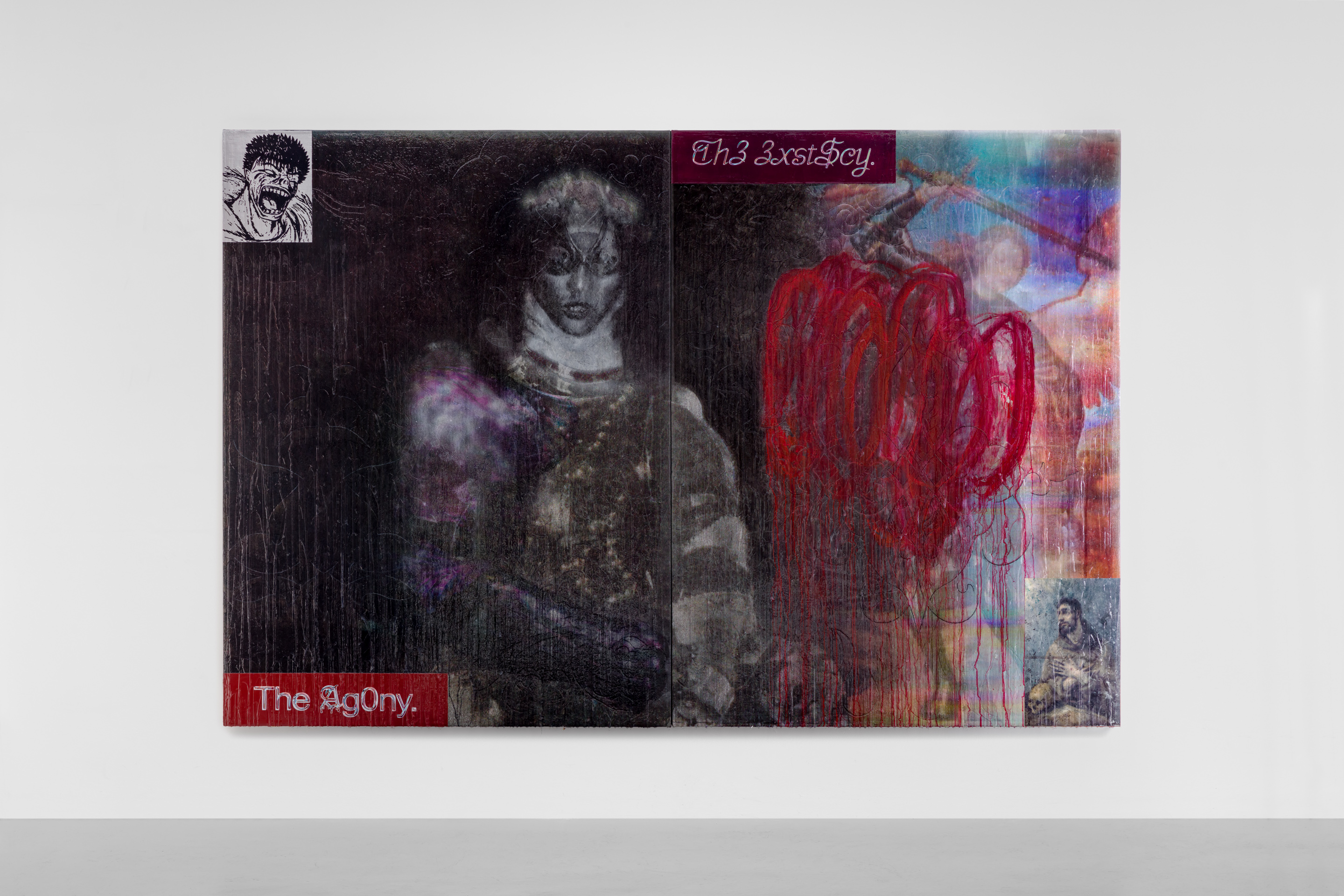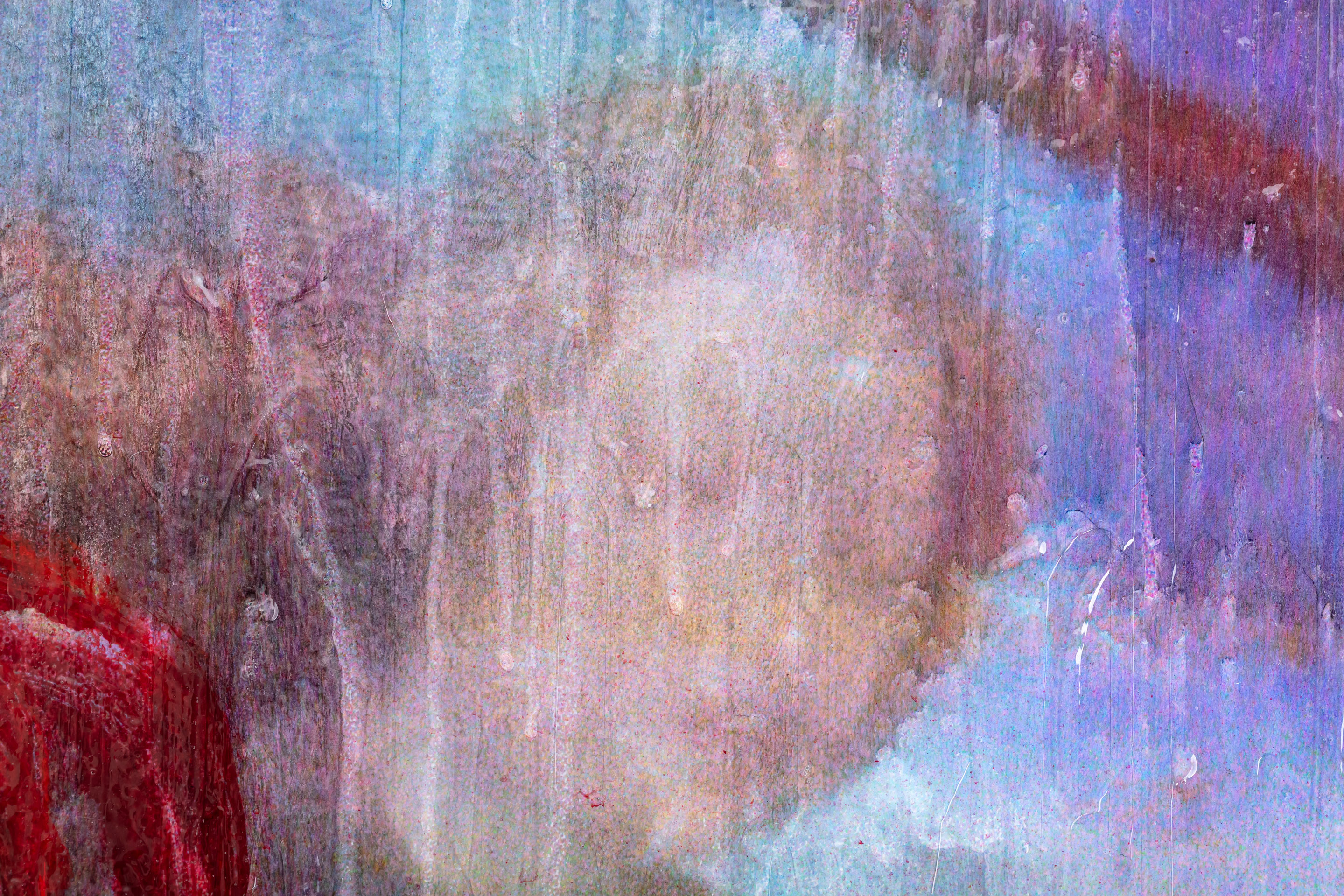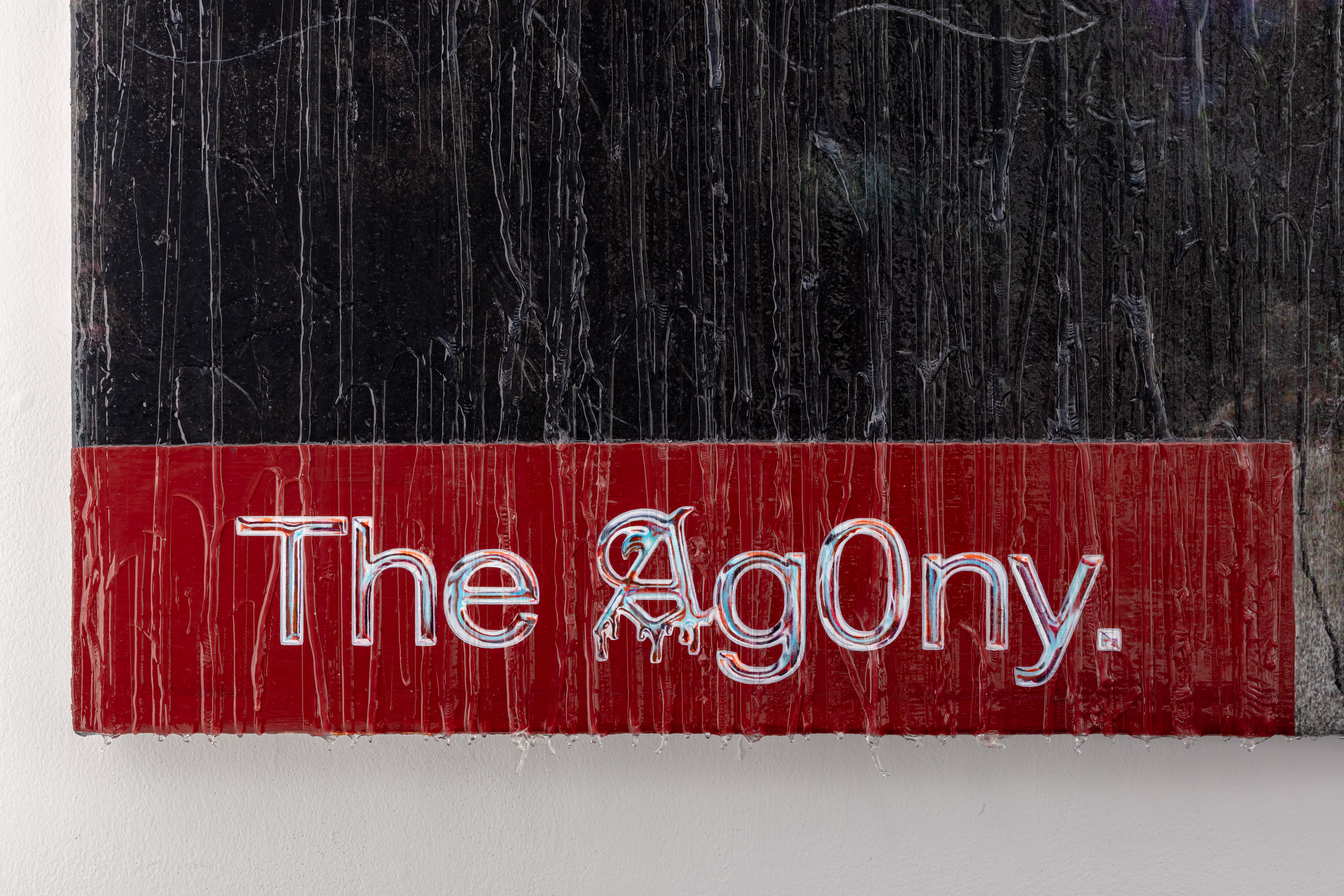


Courtesy the artist and Rose Easton, London, photo: Jack Elliot Edwards
Rose Easton
2 November – 14 December 2024
In the new show by Parker Ito at Rose Easton in Bethnal Green, the first thing that grabs your attention is the live-streamed CCTV footage of the traffic outside on Cambridge Heath Road. The image wraps across the corner of the gallery. Beside it, we ought to have been seeing the same scene rendered through a camera obscura, however such was the gloomy London twilight that this wasn’t functioning when I visited. Periodically, the text “Why am I so beautiful” flashes up, projected on the end wall.
In the centre of the space is a work belonging to a series called the ‘scanner sculptures’, in which the figure of the artist – rendered in moulded glass – is transformed into a fantasy medieval knight. It sits on top of modified photo scanners, hacked to scan each other, using coloured light instead of the standard white. Embedded in the scanners is a pick-up mic, that produces an accompanying soundtrack, including the artist’s voice repeating the phrase “Why am I so beautiful?” Within the piece we can also view a slide carousel, that at intervals projects a grainy, still image of the view from the artist’s Los Angeles studio – all rooftops and distant skyscrapers in a golden light under blue skies. It is a complex, oblique self-portrait of the artist in his studio, expressing a pervading anxiety as to the fundamental purpose of his art, whether that should be criticality or beauty.
For Ito, there is a correspondence between the technology of the camera obscura – possibly used by artists of the Golden Age to produce hitherto impossible perspective – and the contemporary digital mediation of the image. Both technologies have been disparaged as somehow betraying the duty of the artist to their craft. It has been suggested that, in a post-internet world, there is no longer such a thing as a self-contained artwork; instead the work of post-internet artists is one performative stream. A 21st-century gesamtkunstwerk, or total work of art, if you like. Maybe it would be helpful here to offer one of Parker Ito’s definitions of the term, post-internet:
“Post-internet as state or period that we are living in that is applied to everything, not just art, but to the world. If we think about it in those terms, then every single artist ever in the history of art is a post-internet artist. The post-internet era changed the way that we perceived and understood art. Now you can look at cave paintings magnified by a thousand times their original size online. That is more about a historical condition which we are living through and looking at art through.”

Courtesy the artist and Rose Easton, London, photo: Jack Elliot Edwards
Ito situates the art scene or community of artists identifying with the term post-internet specifically between the years 2006 and 2014. In 2014 he had an exhibition at White Cube and that same year one of his paintings sold at auction for $80,000. According to his Wikipedia page, the following year his paintings were selling for less than half that, or not at all. A self-consciously prolific artist, who uses a studio of assistants to produce his work, Ito was also at one time aligned with what was known as Zombie Formalism in the mid 2010s.
Now that he is no longer at the centre of a bubble of art market speculation, it is possible to consider the work in a different light. The current work builds on thinking that came out of the experience of the pandemic. The large diptych painting that is the other major element of the show draws on references as diverse as Francis Picabia’s transparencies paintings, the work of Rudolph Stingel and Los Angeles muralists. Also involved are what Ito calls ‘ambient images’ of his studio, produced by the hacked scanners that are layered into the canvasses and channel his thinking about the tension between abstraction and figuration.
Each panel of the painting carries the text 'The Agony, The ecstasy', serving to convey the intense experience of the creative process. The title has recurred frequently through Ito’s oeuvre, and is, I assume, an arch reference to the 1965 film starring Charlton Heston as Michelangelo. The canvasses are incredibly textured and dense with appropriated and altered images. A heavily romanticised medieval knight on one panel, and angel on the other share space with a screaming Manga character and what is possibly a reproduction of an image of a praying monk by El Greco. Over the centre of the right-hand panel, a looping, blood-red painted gesture drips to the bottom of the canvas. Very real. Very visceral. Very Twombly.

Courtesy the artist and Rose Easton, London, photo: Jack Elliot Edwards
Ito was born in Ventura, California in 1986 and lives and works in Los Angeles. He has exhibited in some of the most important international museums and galleries and his work is held in collections from the Musée d’Art Moderne in Paris to the Fondazione Sandretto Re Rebaudengo, Turin and the Rachofsky Collection in Dallas.
The bewildering mash-up of a title for this exhibition seems to bolt together references to John Bunyan, nursery food, late 19th-century German art theory, Bruce Lee and, possibly, Hogarth. It’s funny, absurd and knowing all at once. One wonders idly what kind of question might have been punched into Chat GPT to produce this glitch as an answer. But maybe the point is that it expresses quite eloquently the historical moment that we are living through, but also how we are looking through and interpreting art itself. Parker Ito’s new show is not easy, but I think it’s probably important.
Caroline Douglas, Director
Parker Ito, The Pilgrim’s Sticky Toffee Pudding Gesamtkunstwerk in the Year of the Dragon, À La Mode, Rose Easton, 223 Cambridge Heath Rd, London E2 0EL
2 November until 14 December 2024